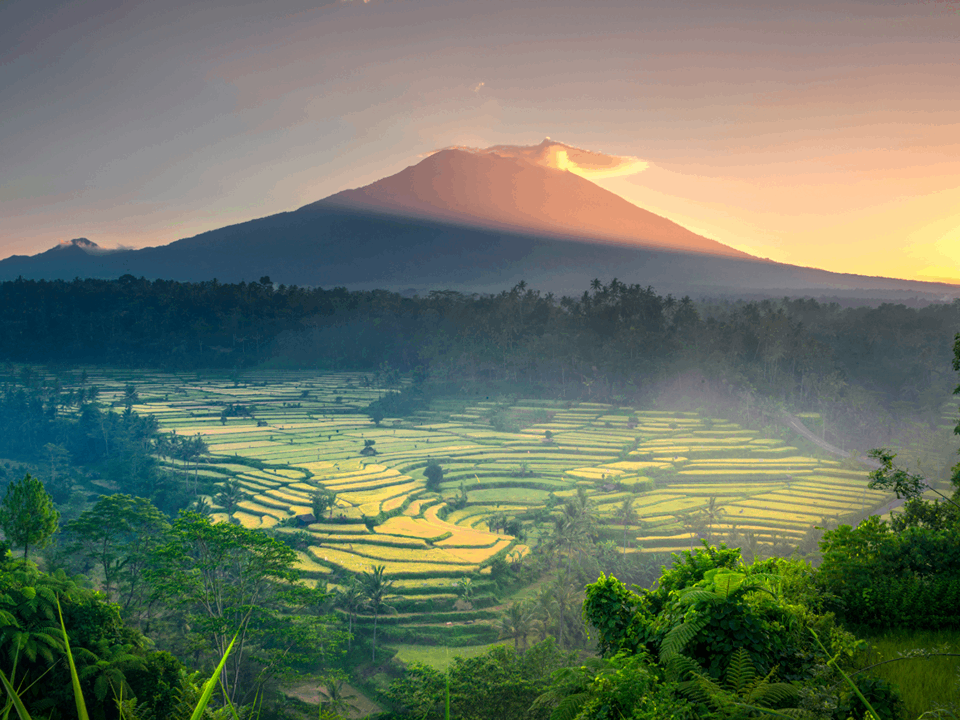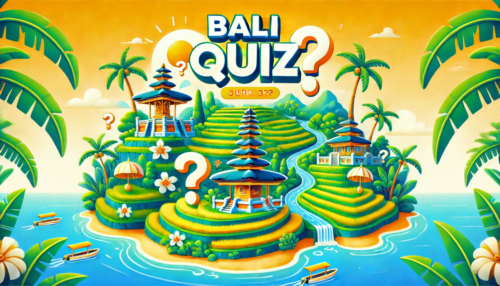Rising majestically above the clouds, Mount Agung commands reverence and awe, embodying the spiritual heart of Bali.
Mount Agung: Bali’s Sacred Volcano
Mount Agung (Gunung Agung), standing at 3,031 meters (9,944 feet), is Bali’s highest and most sacred volcano. Located in the eastern part of the island, Agung is an active stratovolcano revered by the Balinese people, who believe it is home to the gods. This towering peak plays a central role in Balinese spirituality, and climbing Mount Agung is not just a physical challenge but a deeply spiritual journey that offers panoramic views of Bali, Lombok and on clear days even Mount Rinjani.
The Spiritual Significance of Mount Agung
Mount Agung holds immense importance in Balinese Hinduism. The volcano is believed to be a replica of Mount Meru, the sacred axis of the universe in Hindu cosmology. Balinese Hindus consider Mount Agung the spiritual center of the island, and the sacred Besakih Temple, also known as the “Mother Temple,” sits on its southwestern slopes. Major ceremonies and rituals are held here, and the temple itself is a destination for pilgrims and tourists alike.
The mountain’s last major eruption in 1963 caused widespread devastation but, miraculously, left Besakih Temple largely unharmed, further cementing its revered status among the Balinese people.
The Experience of Hiking Mount Agung
Trekking Mount Agung is an intense and rewarding experience, attracting adventurers looking for a physical challenge as well as those seeking to connect with Bali’s spiritual essence. Most treks start late at night, around 11:00 PM or midnight, to ensure hikers reach the summit by sunrise.
There are two primary routes to the summit:
- Besakih Temple Route: This is the more challenging of the two options. It starts from the highest temple complex on the island, Pura Besakih, and takes between 6 to 7 hours to reach the peak. The trail is steep and physically demanding but offers a more complete view of the island, including the crater.
- Pasar Agung Temple Route: A slightly easier option, this trail starts from Pasar Agung Temple and takes about 4 to 5 hours to ascend. While this route doesn’t take you to the true summit, it still offers incredible views, including breathtaking vistas of the eastern coastline and Mount Rinjani on Lombok.
Both routes require a good level of fitness, as the trails are steep, rocky, and can be difficult to navigate in the dark. Hiring a local guide is mandatory for safety and navigation, especially given the unpredictable weather and the mountain’s volcanic activity.
TIP: Start the trek early to reach the summit by sunrise, when the view is clearest and the temperature more comfortable.
Volcanic Activity and Safety
Mount Agung is an active volcano, and its most recent eruptions in 2017 and 2019 caused some disruption in the surrounding areas, including ash clouds and local evacuations. However, Bali’s authorities closely monitor the volcano, and treks are only permitted when it is deemed safe.
Due to its status as an active volcano, it’s essential to check for any warnings or alerts before planning a hike. The last major eruption in 1963 was particularly destructive, killing thousands and dramatically reshaping the landscape. Recent eruptions have been less severe, but trekkers should remain vigilant and heed any advice from local guides and authorities.
Practical Information for Hiking Mount Agung
- Best Time to Visit: The best time to hike Mount Agung is during the dry season, from April to October. During this period, the weather is more stable, and the trails are less slippery. Avoid the rainy season (November to March) due to increased risks of landslides and poor visibility.
- What to Bring: Due to the altitude and early morning cold, it’s important to pack appropriately. Essentials include:
- Warm clothing (temperature at the summit can drop significantly)
- Hiking boots with a good grip
- Headlamp or flashlight (most of the trek is in the dark)
- Water (at least 2 liters) and snacks
- Rain gear, especially during the shoulder seasons
- Camera to capture the stunning views
- Guides and Costs: As a safety precaution, hiring a guide is mandatory. Local guides charge between IDR 600,000 to 1,000,000 ($40-$70 USD), depending on the group size and route. Many organized tours include transportation from your accommodation to the starting point.
Nearby, the Kintamani region offers scenic views, traditional villages, and Lake Batur, perfect for a relaxing stop after your trek.







